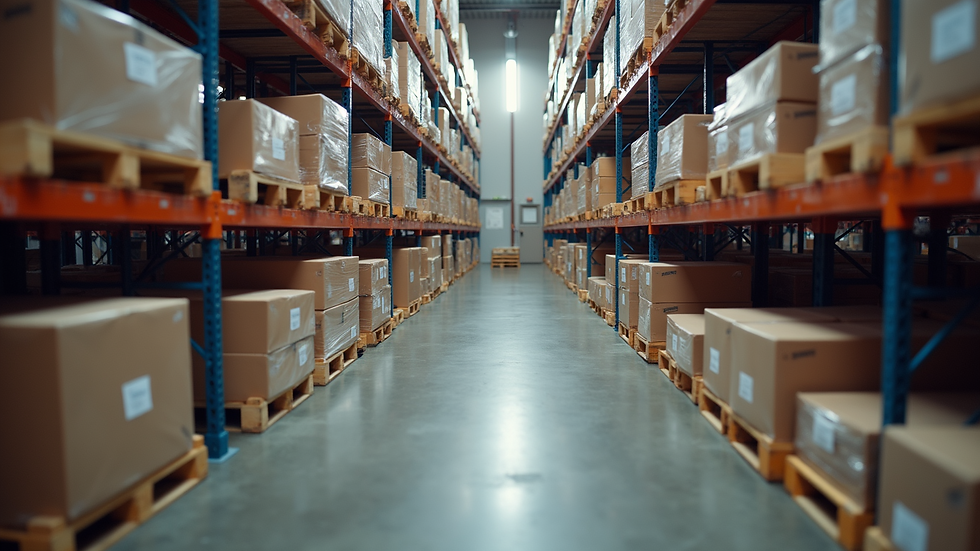Mastering Logistics Customs Clearance for Seamless Trade
- NFS Logisitics

- Oct 27
- 4 min read
Navigating the complexities of customs clearance is essential for ensuring smooth international trade operations. Mastery of this process reduces delays, minimizes costs, and enhances overall supply chain efficiency. I will guide you through the critical aspects of logistics customs clearance, providing actionable insights to optimize your import and export activities.
Understanding the Essentials of Logistics Customs Clearance
Customs clearance is the official process of passing goods through customs barriers to enter or leave a country. It involves submitting required documentation, paying duties and taxes, and complying with regulations. Efficient customs clearance is vital to avoid costly delays and penalties.
To master this process, one must understand the documentation requirements, classification of goods, valuation methods, and applicable tariffs. For example, the commercial invoice must accurately describe the goods, their value, and origin. Incorrect or incomplete documentation often leads to inspections and delays.
I recommend establishing a checklist for each shipment that includes:
Commercial invoice
Bill of lading or airway bill
Packing list
Certificate of origin
Import/export licenses (if applicable)
Additionally, staying updated on regulatory changes in the target market is crucial. Customs authorities frequently revise rules, and non-compliance can result in fines or shipment rejection.

Key Strategies for Efficient Logistics Customs Clearance
Efficiency in customs clearance hinges on preparation, communication, and technology. I emphasize the following strategies:
Pre-clearance Planning: Engage with customs brokers early to verify documentation and compliance. Pre-clearance reduces the risk of last-minute issues.
Accurate Classification and Valuation: Use the Harmonized System (HS) codes correctly to classify goods. Misclassification can lead to incorrect duties and inspections.
Leverage Technology: Utilize electronic data interchange (EDI) systems to submit documents digitally. This accelerates processing and reduces human error.
Build Relationships with Customs Authorities: Establishing trust and open communication channels can facilitate smoother inspections and quicker resolutions.
Risk Management: Implement risk assessment protocols to identify shipments that may require additional scrutiny and prepare accordingly.
By applying these strategies, you can significantly reduce clearance times and improve supply chain reliability.
What are the three types of logistics?
Understanding the three primary types of logistics is fundamental to optimizing customs clearance and overall supply chain management. These types are:
1. Inbound Logistics
Inbound logistics involves the transportation, storage, and receipt of goods coming into a business. This includes raw materials, components, and supplies. Efficient inbound logistics ensures timely availability of inputs for production or resale.
2. Outbound Logistics
Outbound logistics covers the movement of finished products from the business to the end customer. This includes warehousing, order fulfillment, and distribution. Effective outbound logistics enhances customer satisfaction through timely delivery.
3. Reverse Logistics
Reverse logistics manages the return of goods from customers back to the business. This includes returns, recycling, and disposal. Proper handling of reverse logistics can reduce waste and recover value from returned products.
Each type requires tailored customs clearance procedures depending on the nature of goods and trade regulations. Mastery of these logistics categories supports seamless trade operations.

Common Challenges in Customs Clearance and How to Overcome Them
Customs clearance is fraught with challenges that can disrupt supply chains. I have identified the most common issues and practical solutions:
Documentation Errors: Incomplete or inaccurate paperwork is the leading cause of delays. Solution: Implement rigorous document verification processes before submission.
Tariff Classification Disputes: Misclassification can result in unexpected duties or penalties. Solution: Consult tariff experts or use automated classification tools.
Regulatory Changes: Sudden changes in customs laws can catch businesses off guard. Solution: Subscribe to regulatory updates and maintain close contact with customs brokers.
Inspection Delays: Random or targeted inspections can stall shipments. Solution: Maintain compliance records and certifications to expedite inspections.
Payment of Duties and Taxes: Delays in payment can hold shipments at customs. Solution: Arrange for prompt payment methods and consider bonded warehouses to defer payments.
By anticipating these challenges and preparing accordingly, you can maintain a smooth customs clearance process.
Leveraging Technology and Partnerships for Superior Customs Clearance
Technology and strategic partnerships are indispensable in mastering customs clearance. I advocate for the integration of digital tools and collaboration with experienced service providers.
Customs Management Software: Automates document preparation, submission, and tracking. This reduces errors and accelerates clearance.
Real-Time Tracking Systems: Provide visibility into shipment status, enabling proactive management of delays.
Data Analytics: Analyze clearance times and costs to identify bottlenecks and optimize processes.
Partnership with Trusted Customs Brokers and Freight Forwarders: Experienced partners navigate complex regulations and provide local expertise, especially in regions like Dubai and the GCC.
For instance, partnering with a reputable logistics provider ensures access to comprehensive customs services, including compliance consulting and expedited clearance options. This partnership supports your goal of efficient, eco-friendly, and customer-focused transport solutions.
Sustaining Excellence in Customs Clearance Operations
Sustaining high standards in customs clearance requires continuous improvement and adaptation. I recommend the following practices:
Regular Training: Keep your team updated on customs regulations and best practices.
Performance Metrics: Track clearance times, costs, and compliance rates to measure success.
Feedback Loops: Collect feedback from partners and customers to identify areas for enhancement.
Sustainability Initiatives: Incorporate eco-friendly practices in packaging and transport to align with global standards and customer expectations.
By embedding these practices into your operations, you position your business as a leader in seamless trade facilitation.
Mastering logistics customs clearance is a strategic imperative for any business engaged in international trade. Through meticulous preparation, strategic partnerships, and technological adoption, you can transform customs clearance from a potential bottleneck into a competitive advantage. Embrace these principles to achieve operational excellence and support your growth ambitions in dynamic markets.




Comments